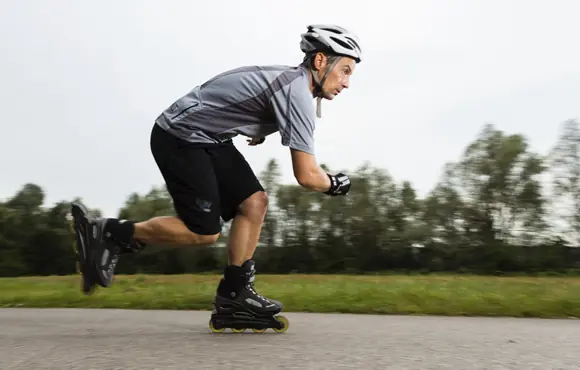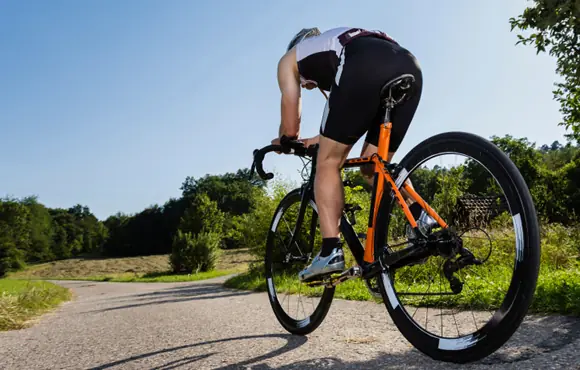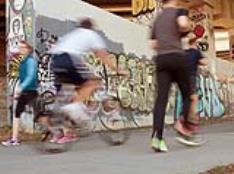Running
1 of 8
Running is a time efficient and versatile sport for cyclists. And since running is weight bearing, it can help cyclists maintain optimal bone health and promote balanced muscular strength. Running also helps to develop eccentric strength, which is important because so little occurs during the pedal stroke.
Eccentric strength is the muscle's ability to generate force while lengthening. During the running stride, the muscles of the lower body must decelerate the leg once ground contact occurs (an eccentric action). Because of this, it's important to start off conservatively when beginning a running program to allow your body to adapt.
Skiing and Snowshoeing
2 of 8
For many of you across the northern U.S. and Canada, snow and ice may allow you to try cross-country skiing and snowshoeing this winter. The traditional diagonal stride as well as the skating technique can provide a low impact, highly demanding, and extremely enjoyable cardiovascular workout. Snowshoeing is an alternative to skiing and can be done during throughout the winter. With snowshoeing, a simple hike can turn into a strenuous cardiovascular workout, and if poles are used, your upper body can get a workout too.
Swimming
3 of 8
Swimming is an excellent total body, low impact form of exercise that can provide a time-efficient workout for the cyclist. The one major drawback of swimming is that it's technique-dependant; a flawless swimming stroke can be as elusive as the perfect golf swing. It would be worthwhile to invest in a couple of lessons with a swim coach to learn the subtleties of the sport.
Rowing
4 of 8
Like swimming, rowing provides a challenging total-body, low impact workout. Many health clubs and training centers have stationary rowers available that are less popular than the treadmills or elliptical machines, so you'll never have to wait in line.
One of the benefits to rowing is that you can expend just as much energy and burn as just many calories rowing as you would running in about the same time. So if running is not for you, give rowing a try. Remember, technique is important to avoid injury. Many people overemphasize the upper body during the rowing motion. The general rule is that 80 percent of the force should come from the lower body, and only 20 percent should be generated from the upper body.
Hiking
5 of 8
Are you a lover of the outdoors? Hiking is a wonderful, healthy way to enjoy the outdoors and spend quality time with friends and family. Carrying a backpack and using hiking poles can turn a simple walk into to a calorie-burning adventure.
Inline Skating
6 of 8
In areas where snow is non-existent, inline skating can provide a valuable form of cross training for cyclists. Winter speed skating has traditionally been used in Europe as a go-to sport during the winter for cyclists. Skating helps develop the muscles on the inside and outside of the leg, which are not as involved in the linear motion of the pedal stroke. Inline skating on pavement can duplicate the benefits of ice-skating, but be careful and always wear protective gear. Helmets (your cycling one will do just fine), kneepads, elbow pads and wrist guards are a must.
Recreational Team Sports
7 of 8
Team sports are an excellent way to develop speed, power, agility, coordination and balance. You can also involve family and/or some of your non-cycling friends to make it fun.
A couple of times per week, plan a get-together for a friendly pick-up game of basketball, volleyball, softball, tennis or racquetball. Participating in these sports will work different muscles and movement patterns that will help to improve your overall health and fitness.







Discuss This Article